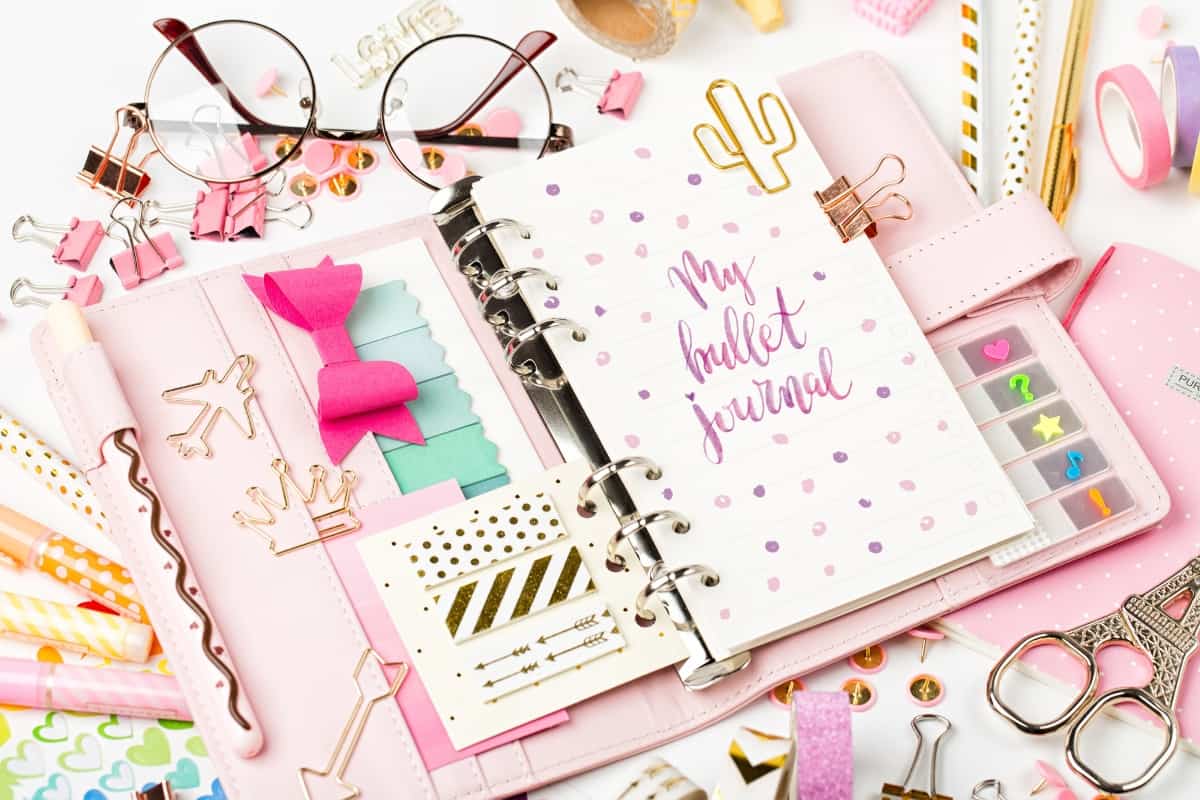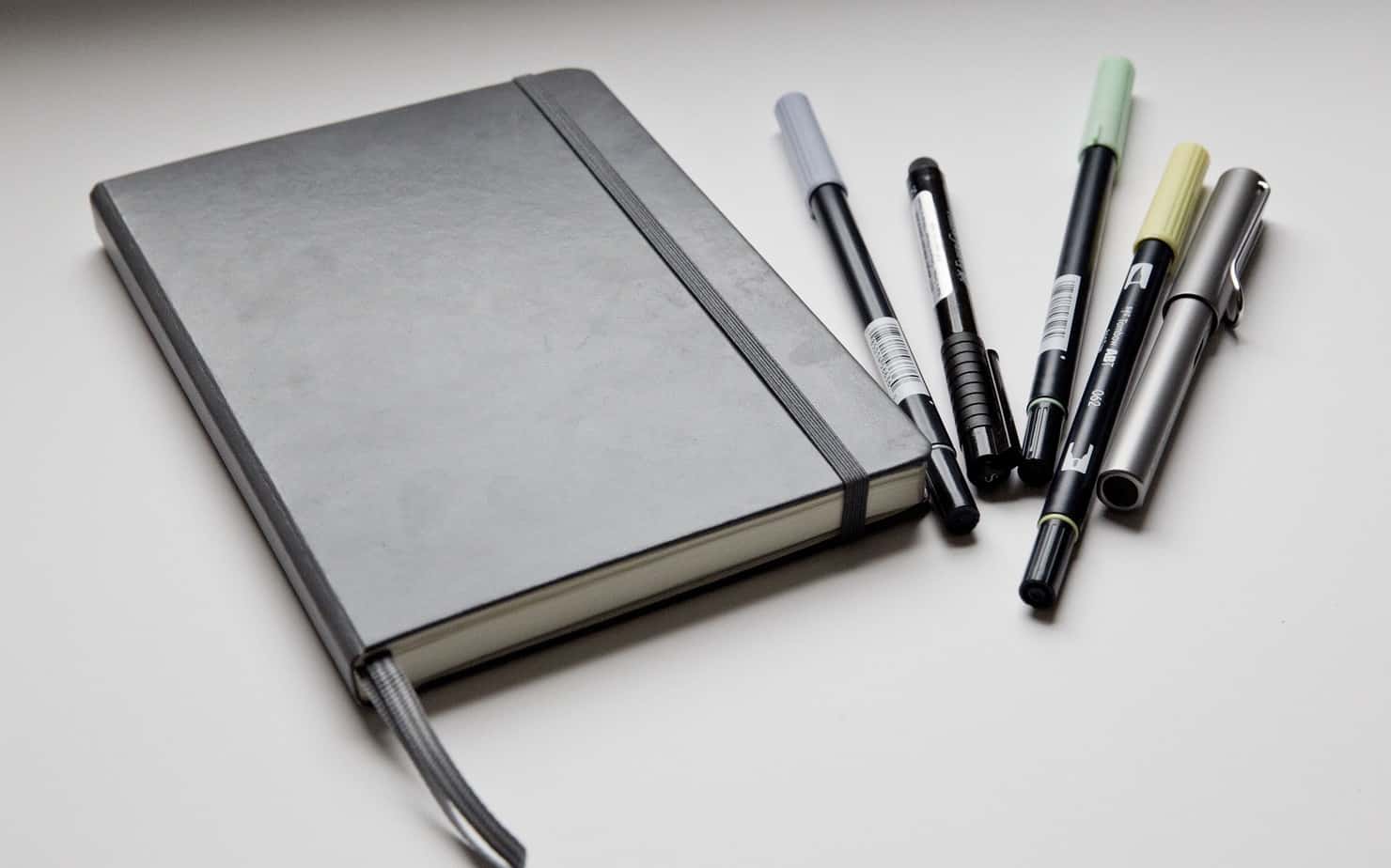Bullet Journal: The Ultimate Guide for Organizing Everyday Life

“A tidy house, a tidy mind.” This doesn’t just apply to your house, but also to organizing everyday life. A Bullet Journal offers a simple yet effective solution to keep your daily life organized and reduce stress.
Everything in One Place With a Journal
Is your planner full of appointments? Are ‘Post-its’ stacking up everywhere, and the chaos is getting worse and worse? The Bullet Journal might be a viable alternative. It was invented by Ryder Carroll and it combines a diary, a notepad, an appointment calendar, all your to-do lists, and much more in one place. The fixed structure of the Bullet Journal gives you a strong sense of order, but at the same time allows you an enormous amount of freedom.
How does the Bullet Journal work?
Initially, all you need for Bullet Journaling is a notepad and a pencil. Many professionals later decorate their notes with decorative tape like Washi Tape, stickers, or doodles. Search the hashtag #bulletjournal on Instagram, and you’ll find many ideas on how to design your Bullet Journal.
First, let’s look at the basics.
The Structure of the Bullet Journal
At the very beginning, you have an empty notebook. Just like in a textbook, the first pages are dedicated to an index, where you specify which pages provide information on the individual topics. Your index may be quite empty at the start, but this will rapidly change. The index will help you find all the important topics later.
The next pages are usually dedicated to the annual calendar. All the things that need to be done in the current month will be added later on. The pages are numbered consecutively and transferred to the index. This concept is applied to all the following pages.
Next comes the monthly calendar/monthly plan. One month usually occupies a double page, with content and weekdays on the left, and space for appointments, notes, and other information on the right. As an intermediate step, you may also include a weekly plan, or go directly to the daily plan.

Entries in Your Bullet Journal Are Growing
The entries in the Bullet Journal should not resemble a novel but rather consist of short sentences and key points. Entries fall into three categories: tasks, appointments, and notes. Tasks are marked with a ‘•’, appointments with an ‘O’, and notes with a ‘- ‘. It might look like this: Friday 26th August
- Clean apartment
- Dentist 3:00 PM
- Visit new boutique in the city
Entries may also be given symbols. An ‘*‘ stands for high priority, an ‘!’ marks an inspiring entry or a brilliant idea, and an eye may convey that more information should be gathered later.
That’s the first “rigid” framework of the Bullet Journal so far. Of course, since this is all about your needs, you may experiment and customize this structure to however you like. You can, for example, fill up the pages with workout plans, shopping lists, or other things. Thanks to the index, you’ll find everything again very quickly.

Transferring Notes in the Bullet Journal – Move to the Next Month
There’s a process at the end of the month that is either called ‘migration’ or transfer. When preparing the next monthly plan, you go through all the tasks of the previous month. You can change the ‘•’ of completed tasks to an ‘X’. With regard to unfinished jobs, you might think about whether it makes sense to make note of the task again. If the answer is “no”, cross it out. If the task is still important, transfer it to the next monthly plan. You mark it accordingly, by changing the ‘•’ to a ‘>’. If the task is important in the long term, it can be shifted to the yearly plan, marking it with a ‘<’. You may of course transfer any tasks from the daily plan to the next day.
The Bullet Journal can also be used in conjunction with other organizational tools, like the FamilyApp. With a secure message board, FamilyApp is another great way to coordinate and organize your whole family’s schedule.
Bullet Journal: A Miracle of Organization
The Bullet Journal initially sounds like a lot of work but can be extremely beneficial. All your appointments, tasks, ideas and notes are combined in one place, making it very efficient for getting jobs done.





